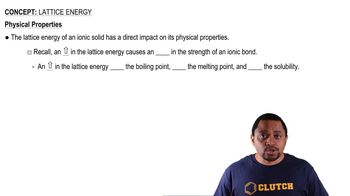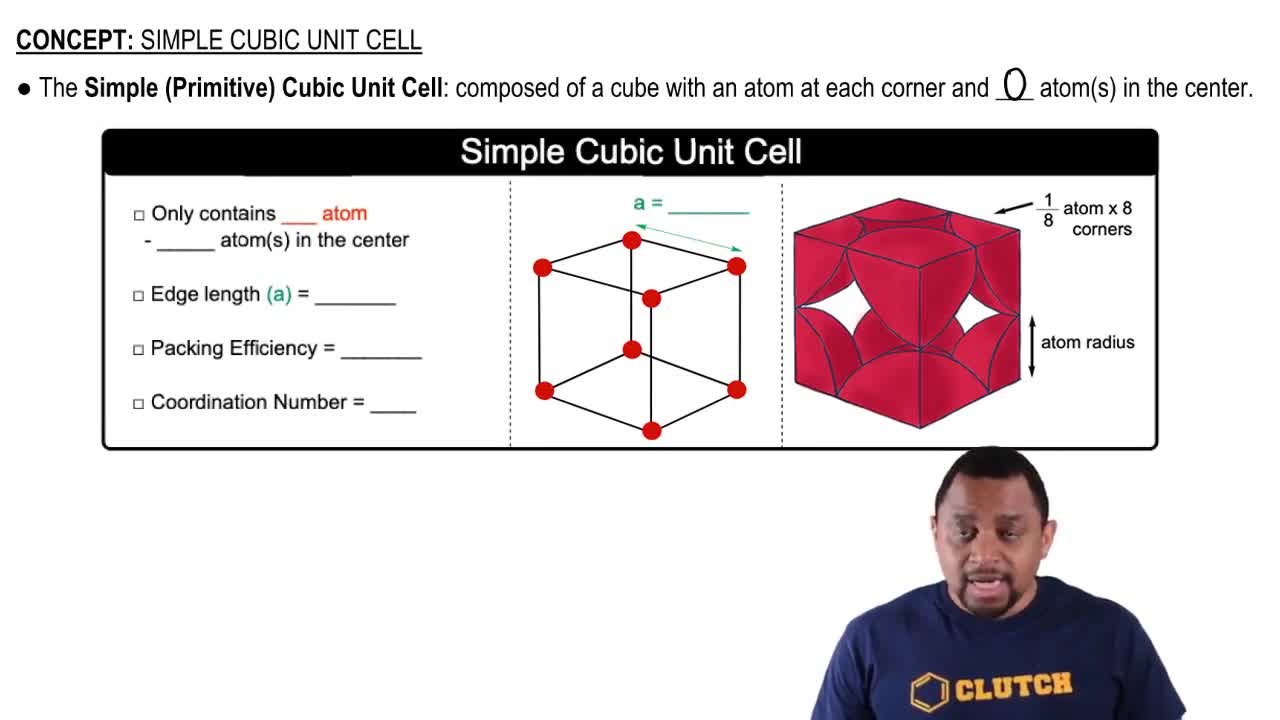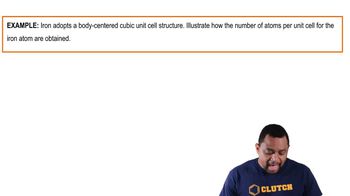Which statement correctly describes a difference between graphene and graphite? (a) Graphene is a molecule but graphite is not. (b) Graphene is a single sheet of carbon atoms and graphite contains many, and larger, sheets of carbon atoms. (c) Graphene is an insulator but graphite is a metal. (d) Graphite is pure carbon but graphene is not. (e) The carbons are sp2 hybridized in graphene but sp3 hybridized in graphite.
A face-centered tetragonal lattice is not one of the 14 three-dimensional lattices. Show that a face-centered tetragonal unit cell can be redefined as a body-centered tetragonal lattice with a smaller unit cell.
 Verified step by step guidance
Verified step by step guidanceKey Concepts
Lattice Structures

Unit Cell

Body-Centered vs. Face-Centered

Selected chlorides have the following melting points: NaCl (801 °C), MgCl2 (714 °C), PCl3 (-94 °C), SCl2 (-121 °C) (a) For each compound, indicate what type its solid form is (molecular, metallic, ionic, or covalent-network).
Imagine the primitive cubic lattice. Now imagine pushing on top of it, straight down. Next, stretch another face by pulling it to the right. All angles remain 90°. What kind of primitive lattice have you made?
Pure iron crystallizes in a body-centered cubic structure, shown in the figure. but small amounts of impurities can stabilize a facecentered cubic structure. Which form of iron has a higher density?
What type of lattice—primitive cubic, body-centered cubic, or face-centered cubic—does each of the following structure types possess: (e) ZnS?
